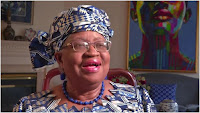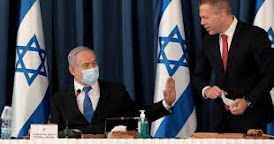US energy firms during this past week cut the number of oil rigs operating for the first time since November 2020.
Brent crude futures ended the session down 1.6% at US$62.91/barrel, while US benchmark, West Texas Intermediate (WTI) fell 2.1%, to settle at US$59.24. For the week, Brent gained about 0.5% while WTI fell about 0.7%. This week, both benchmarks had climbed to the highest in more than a year.
Price pullback thus far appears corrective and is slight within the context of this month’s major upside price acceleration. Unusually cold weather in Texas and the Plains states curtailed up to 4 million barrels per day (bpd) of crude production and 21 billion cubic feet of natural gas, analysts estimated.
Texas refiners halted about a fifth of the nation’s oil processing amid power outages and severe cold. Companies were expected to prepare for production restarts on Friday as electric power and water services slowly resume.
While much of the selling relates to a gradual resumption of power in the Gulf coast region ahead of a significant temperature warm-up, the magnitude of this week’s loss of supply may require further discounting given much uncertainty regarding the extent and possible duration of lost output.
A point worth noting is that oil prices fell despite a surprise drop in the US crude stockpiles, before the big freeze hit. Inventories fell 7.3 million barrels to 461.8 million barrels, their lowest since March last year, the Energy Information Administration reported on Thursday.
Vaccines and the impressive rollouts have delivered strong gains, as have the efforts of OPEC plus - Saudi Arabia, in particular - and the big freeze in Texas, which gave oil prices one final kick during the week. With so many bullish factors now priced in, it seems some of these positions being unwound.
The United States on Thursday said it was ready to talk to Iran about returning to a 2015 agreement that aimed at preventing Tehran from acquiring nuclear weapons. Still, analysts did not expect near-term reversal of sanctions on Iran that were imposed by Trump administration.
This breakthrough increases the probability of Iran returning to the oil market soon, although there is much to be discussed and a new deal may not be a carbon-copy of the 2015 nuclear deal.
Lately, oil prices climbed on hopes that the US stimulus package will boost the economy and fuel demand, as supplies tighten due largely to output cuts by top producing countries. The rally was also in anticipation of the US President Joe Biden meeting with a bipartisan group of mayors and governors as he keeps pushing for approval of a US$1.9 trillion coronavirus relief plan to bolster economic growth and help millions of unemployed workers.
Oil prices have risen due to production cuts from the Organization of the Petroleum Exporting Countries (OPEC) and allied producers in the group OPEC+. Oil prices remained buoyed by further signs that crude stocks, particularly in the US were falling. Analysts anticipate that inventories will fall further later this year as transport fuel demand revives in tandem with the easing of virus-related restrictions on travel.
OPEC this week ratcheted down expectations for global oil demand to recover in 2021, trimming its forecast to 5.79 million bpd. The International Energy Agency (IEA) said oil supply was still outstripping global demand, though COVID-19 vaccines are expected to support a demand recovery.
The (IEA) report paints a more pessimistic picture than market participants have presumably been envisaging given the current high prices. Demand data from the world’s biggest oil importer also paints a bleak picture.
The number of people who travelled in China ahead of Lunar New Year holidays plummeted by 70% from two years ago as coronavirus restrictions curbed the world’s largest annual domestic migration, official data showed.
The US drillers this week added oil and natural gas rigs for a 12th week in a row, the longest streak of additions since June 2017.
According to secondary sources, OPEC crude oil production averaged 25.50 million bpd in January 2021, up 180,000 bpd from December 2020, with output rising in top producer Saudi Arabia, as well as in Venezuela and Iran, which are exempt from the OPEC+ cuts.






